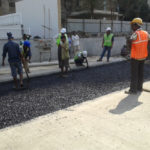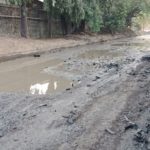Road Contractor in Navi Mumbai | Jay Ambe Petrochem And Infra
Road Contractor in Navi Mumbai | Jay Ambe Petrochem And Infra
Road Construction Work Zone Safety Tips
For Road Contractor in Navi Mumbai Contact Jay Ambe Petrochem And Infra
Being able to drive your excavator to various segments on a road job can be a huge time and money saver. First, you can reduce your reliance on a lowboy, which eliminates extra equipment, labor and time spent loading and unloading a machine.
Every concrete contractor must have a complete set of tools to get the job done. Since concrete waits for no one, the right tools can make the difference between a successful pour and a potential disaster.
Summer is a particularly busy time for road work, and it also happens to be the heaviest travel season. That means increased traffic and more drivers who are unfamiliar with their surroundings. In other words, it’s a good time to brush up on some basic tips for road construction site safety.
Animals trails and dirt tracks were the first-ever roads that human beings used to travel from one place to another. Icknield Way in Roads in India and Apian Way in Rome are examples of ancient roads, and their traces can still be seen. Gradually, human beings started moving out and the condition of roads also improved with time. Today we have highway bridges as high as 245 meters from the ground level.
Screeds are long, straight, stiff tubing or boards used to smooth and roughly level wet concrete shortly after it is poured. Screeds are available in different sizes and can even be project-specific, such as those used for building concrete bridges.
Highway work zones are dangerous for all highway travelers but are particularly difficult for trucks, with narrowed, shifting lanes.
Every road construction project should have a transportation management plan. The plan should consist of a temporary traffic control plan to protect workers by safely conducting traffic around or through the work zone. You should also have traffic control.
Concrete work can be physically demanding and sometimes dangerous, and proper worksite safety practice requires the use of protective gear.
The work zone should consist of an advanced warning area with warning signs alerting motorists of upcoming changes in driving conditions, a transition area using traffic control devices for lane closures and traffic pattern shifts, a buffer area, the work area, and a termination area to allow traffic to resume back to normal and a sign indicating that the work zone has ended.
A wheeled excavator, unlike a truck-mounted excavator, can be outfitted with a range of arm and attachment options to meet the requirements of the job. The versatility of the two-piece boom allows operators to easily transition from placing a jersey barrier to digging a trench to laying a culvert and cleaning up the worksite with the front blade.
Planning is important because the global population is increasing at an exponential rate; globalization and technological advancements have made things easier for people but challenging for engineers. Planning helps in the estimation of risks, capacity calculation, and it enables engineers to leave scope for any future modification or expansion of roads or bridges.
Create individual, clearly delineated work zones within the active construction site for specific purposes, such as materials and tools storage, heavy equipment use, parking, walking, etc. Always remain aware of your surroundings; stay clear of lifting or lowering loads, swing radii, vehicles or machines that may back up, blind spots, and other potential dangers.

 Previous Post
Previous Post Next Post
Next Post